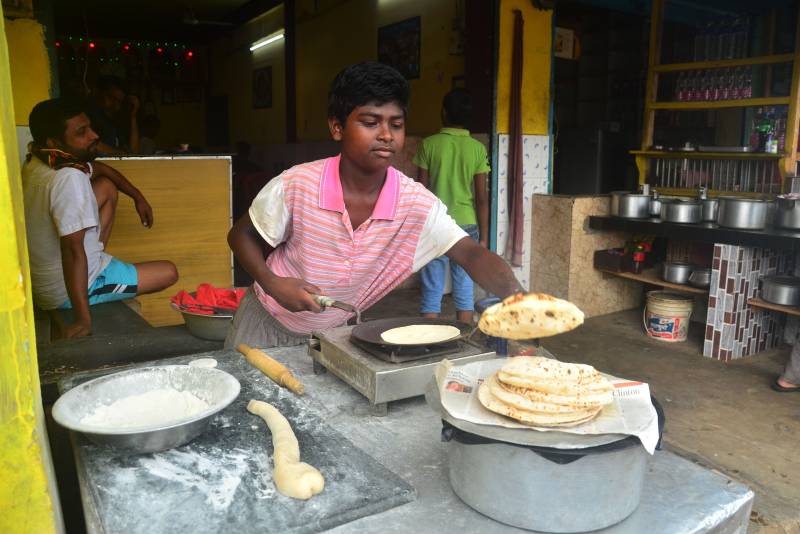
Imagine a classroom in which young students are excitedly discussing their future aspirations and a career in medicine feels like a tangible goal rather than a distant dream. Now, imagine that most of the students come from historically marginalized communities — Black, Hispanic and Indigenous populations — that disproportionately face higher rates of chronic illness, shorter life expectancies and poorer health outcomes.
We know that these disparities can shrink when patients are cared for by doctors who share their cultural backgrounds and lived experiences. The problem? Our health care workforce remains overwhelmingly unrepresentative of the communities it serves.
For many students from underrepresented backgrounds, a medical career feels out of reach. The path to becoming a doctor is daunting, full of obstacles like financial hardship, lack of mentorship and systemic inequities in education. Many students are sidelined long before they consider medical school, while those who persist face an uphill battle competing against peers with far more resources and support.
To mitigate these disparities, we must look beyond our hospitals and medical schools and into the places where young minds are shaped: our K-12 classrooms. Early exposure to health care careers can ignite curiosity and show students that they belong in places where they have historically been excluded.
Related: Become a lifelong learner. Subscribe to our free weekly newsletter to receive our comprehensive reporting directly in your inbox.
Organizations like the Florida State University College of Medicine, with its “Science Students Together Reaching Instructional Diversity and Excellence” (SSTRIDE) program, are leading the way in breaking down barriers to medical careers for underrepresented students. SSTRIDE introduces middle and high school students to real-world medical environments, giving them firsthand exposure to health care settings that might otherwise feel distant or inaccessible. Then, the program threads together long-term mentorship, academic enrichment and extracurricular opportunities to build the confidence and skills students need to reach medical school.
The 15 White Coats program in Louisiana takes a complementary but equally meaningful approach: transforming classroom environments by introducing culturally relevant imagery and literature that reflect the diversity of the medical profession. For many students, seeing doctors who look like them — featured in posters or books — can challenge internalized doubts and dismantle societal messages that suggest they don’t belong in medicine. Through fundraising efforts and scholarships, other initiatives from 15 White Coats tackle the financial barriers that disproportionately hinder “minority physician aspirants” from pursuing medical careers.
The impact of these programs can be profound. Research shows that students exposed to careers in science or medicine at an early age are far more likely to pursue these fields later in life. And medical students who belong to underrepresented groups are the most likely to return to underserved communities to practice. Their presence can improve communication, foster patient trust and drive innovation in addressing health challenges unique to those communities.
These programs can even have a ripple effect on families and entire communities. When young people pursue careers in medicine, they become role models for siblings, friends and neighbors. This creates a culture of aspiration in which success feels both possible and accessible, shifting societal perceptions and inspiring future generations to aim higher.
But programs like 15 White Coats and SSTRIDE cannot thrive without sustained investment. We need personal and financial commitments to dismantle the systemic barriers that prevent students from underrepresented groups from entering medicine.
Policymakers and educators must step up. Federal and state educational funding should prioritize grants for schools that partner with hospitals, medical schools and health care organizations. These partnerships should offer hands-on experiences like shadowing programs, medical summer camps and health care-focused career fairs. Medical professionals also have a role to play — they can volunteer as mentors or guest speakers, offering valuable guidance and demystifying the path to a medical career.
As a medical student, I know how transformative these experiences can be. They can inspire students to envision themselves in roles they might never have imagined and gain the confidence to pursue dreams that once seemed out of reach.
Let’s be clear, representation in medicine is not about optics. It’s about improving health outcomes and driving meaningful change. Building a stronger, more diverse pipeline to the medical profession is not just an educational priority. It’s a public health imperative.
An investment in young minds today is an investment in a health care system that represents, understands and serves everyone. Equity in health care starts long before a patient walks into a doctor’s office. It begins in the classroom.
Surya Pulukuri is a member of the class of 2027 at Harvard Medical School.
Contact the opinion editor at opinion@hechingerreport.org.
This story about health equity was produced by The Hechinger Report, a nonprofit, independent news organization focused on inequality and innovation in education. Sign up for Hechinger’s weekly newsletter.
The post STUDENT VOICE: The path to health equity begins in K-12 classrooms appeared first on The Hechinger Report.
Imagine a classroom in which young students are excitedly discussing their future aspirations and a career in medicine feels like a tangible goal rather than a distant dream. Now, imagine that most of the students come from historically marginalized communities — Black, Hispanic and Indigenous populations — that disproportionately face higher rates of chronic illness,
The post STUDENT VOICE: The path to health equity begins in K-12 classrooms appeared first on The Hechinger Report. Elementary to High School, Higher Education, Opinion, Race and Equity, Career pathways and economic mobility, College to careers, Graduate education, Health and nutrition, Higher education access, poverty, Race, STEM The Hechinger Report











